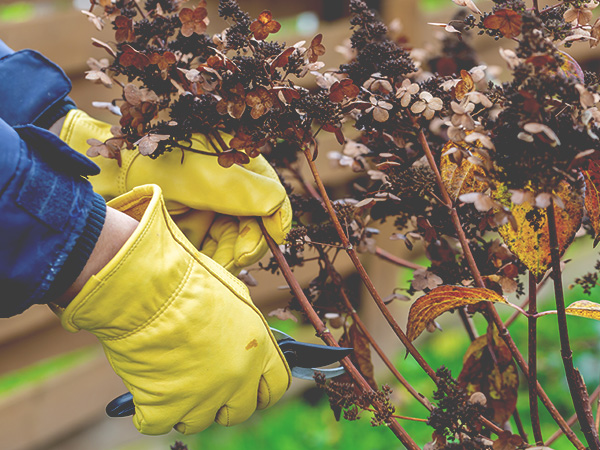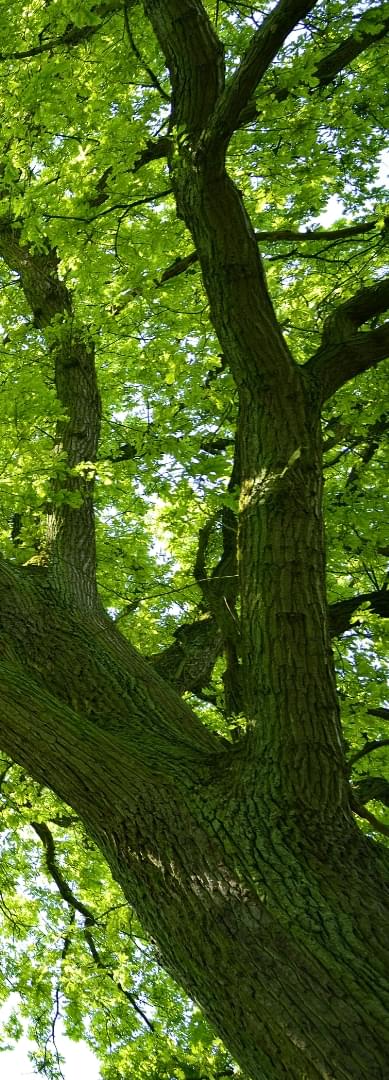 As temperatures drop in autumn, it’s the perfect time to prepare your lawn and garden for winter. Though it may seem like your yard is dormant as the weather cools, there is a lot going on in the soil until it completely freezes.
As temperatures drop in autumn, it’s the perfect time to prepare your lawn and garden for winter. Though it may seem like your yard is dormant as the weather cools, there is a lot going on in the soil until it completely freezes.
Here are tips for lawn & garden care, winterizing plants, planting and general cleanup and maintenance to put you in a position for success next spring.
Lawn & Garden Care
 Mow
Mow
Just because it’s colder outside doesn’t mean you can put the lawn mower away for the season. You should continue to mow the lawn until the grass stops growing. When you’re confident mowing is done for the season, you can drain out the gas for your mower.
Reseed bare spots
Fall’s cooler temperatures and abundant moisture make it easy to reseed pesky bare spots in your lawn. You can rake the surface to loosen soil, sprinkle grass seed and cover lightly with mulch to prevent bird interference. Make sure to keep it well-watered until the grass is well-established.
Weed one last time
Weeding is still important in autumn – because even one weed left behind can produce hundreds of seeds that will grow into weeds the following season. If your soil is hard and dry, water your garden a few hours before you weed. The holes left behind are perfect spots to plant spring-flowering bulbs.
Consider rotating your crop
Now is the time to make a note of what plants were grown where in your vegetable garden. Don’t rely on your memory! This will help in planning next year’s planting. Growing plants in the same family in the same place year after year allows pests and diseases specific to that family to develop. It also depletes the soil of the same nutrients each year.
Spread compost
The compost can fill in holes where any plants were removed. Fall rains will help work the beneficial microbes and nutrients further into the soil. Plus, fall is an excellent time to start your own compost pile. You can start with garden soil, brown leaves, straw and coffee grounds from your kitchen.
Winterizing Plants
 Wrap tree trunks to avoid frost cracking
Wrap tree trunks to avoid frost cracking
This prevents damage to thin-barked species in winter when sun-warmed sap quickly freezes at nightfall and causes bark to split. You can use paper tree wrap, starting an inch below soil level and up to the lowest branches. Remove in spring to allow new growth.
Protect plants from critters
Surround shrubs, plants, young trees and bulb flowers with burlap for a simple, breathable, and cost-effective form of protection from browsing critters.
Mulch
Mulching keeps the soil at a more even temperature and helps prevent soil heaving from forcing plants out of the ground. Wait until after a hard freeze, then spread it around the base of trees and shrubs in your yard. Don’t pile mulch up around the trunk.
Water well
Make sure your plants are braced for winter by watering until the ground freezes. In warm climates, water throughout the winter if rain is lacking.
Planting
 Add color
Add color
You can add a pop of color for the fall season with pansies, mums and ornamental kale. They’ll flourish in the cooler temperatures and can stand up to frost.
Consider bulbs
Fall is the time to plant spring-blooming flower bulbs such as crocus, hyacinth, grape hyacinth, daffodils and tulips. A little planning will bring big rewards next spring when your garden blooms with flowers.
Try a new crop
You can sow spinach and lettuce seeds for a late fall crop. You can also cover root crops such as carrots and rutabagas with straw to facilitate winter harvests.
General Cleanup & Maintenance
 Rake
Rake
Collect leaves so they don’t smother the grass. Feel free to use our poly leaf tote. You can also mow the lawn and collect the clippings and shredded leaves to use as mulch for flower and shrub beds or add to your compost pile.
Clean up the yard
Remove dead annuals. Cut back perennials. This gives the garden a neater appearance and may reduce the chance of pests overwintering in the debris and causing problems next year.
Remove plant accessories
You can remove canes and other plant supports. Be sure to wipe off soil with soapy water, let them dry, and store them in a shed or garage. Don’t forget about ceramic and clay pots either because they may crack in freezing temperatures. Dump the soil on your garden bed and sterilize the pots with a diluted bleach solution.
Get ready for the next growing season
Clean and sharpen garden tools before putting them away. Disconnect the garden hose and drain it. Wipe down outdoor furniture and store under cover.
Store summer bulbs
Where winters are cold, you can save summer bulbs like dahlia, gladiolus and canna for use next year. Simply dig them up after the first frost, dry out the root structures for a few days and then shake off the excess soil. Be sure to store them for the winter in peat moss or sawdust in a cool, dark basement or root cellar.
Collect seeds
Collect the seeds of your favorite annual and store them for use next year. Put the seeds in paper envelopes stuffed in a glass jar and store in a dry area indoors.



